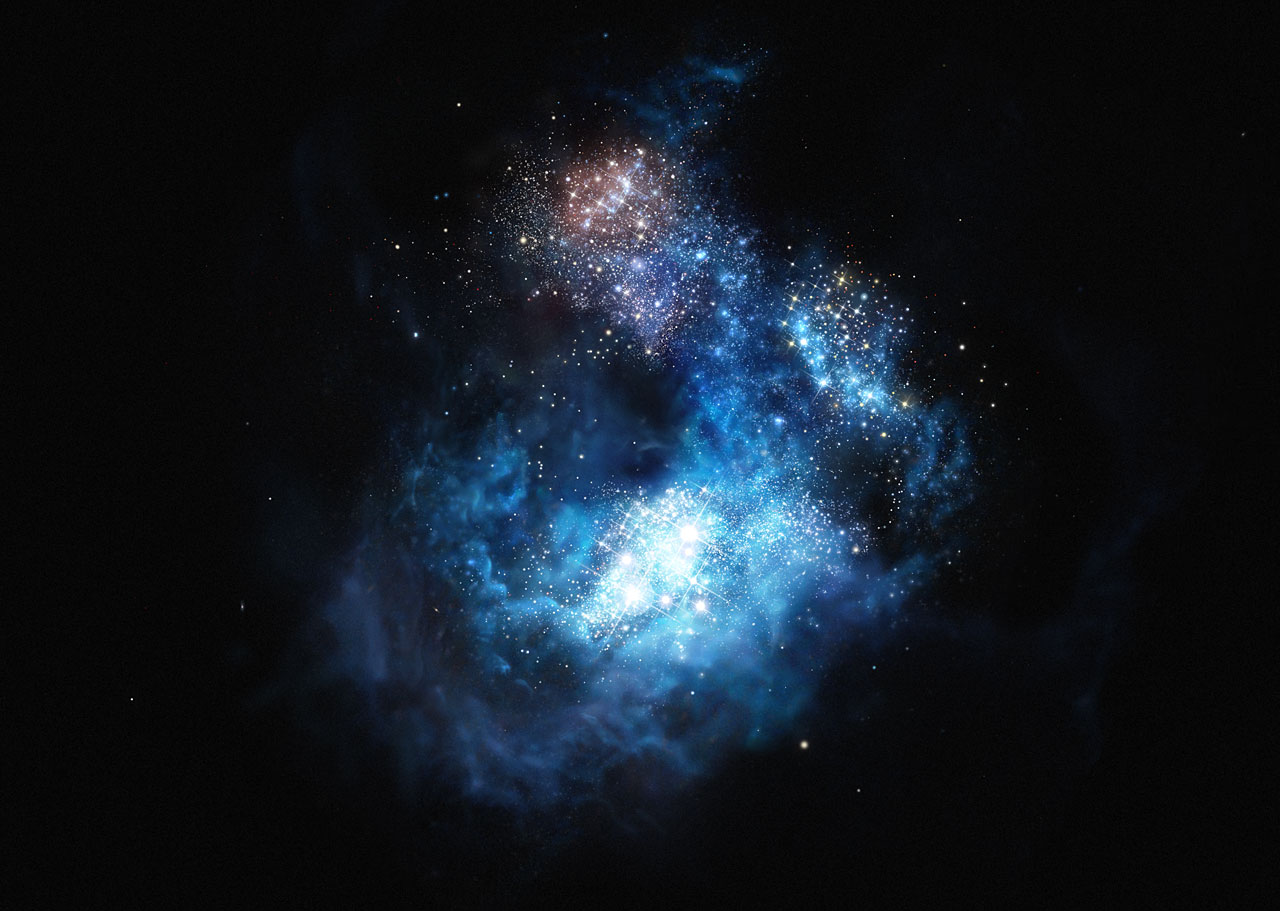Best Observational Evidence of First Generation Stars in the Universe. VLT discovers CR7, the brightest distant galaxy, and signs of Population III stars
Astronomers using ESO’s Very Large Telescope have discovered by far the brightest galaxy yet found in the early Universe and found strong evidence that examples of the first generation of stars lurk within it. These massive, brilliant, and previously purely theoretical objects were the creators of the first heavy elements in history — the elements necessary to forge the stars around us today, the planets that orbit them, and life as we know it. The newly found galaxy, labelled CR7, is three times brighter than the brightest distant galaxy known up to now.
 |
 |
Left: Artist impression of CR7, the brightest galaxy in the early Universe, which was found to host stars of the first generation formed after the Big Bang. The galaxy is at 12.9 billion light years from the Earth, seen at an epoch where the Universe was just 800 million years young. Right: Hubble Space Telescope image of the galaxy showing three components. Region A appears to be dominated by stars of primordial composition.
- Complete Press Release text from the University of Geneva, in french
- Scientific Publication (pdf, Article to appear in the Astrophysical Journal)
- Links to the Press Release:
- Université de Genève
- ESO
- Institute of Astrophysics and Space Sciences, Lisbonne (in portugese)
- University of California, Riverside
- Leiden University (in dutch)
Some recollections from the press and various websites:
- Radio-Television Suisse (RTS – QCFD)
- Neue Zürcher Zeitung
- Le Temps
- Nature News
- Science Magazine
- New York Times
- Washington Post
- National Geographic
- CBS News
- Huffington Post
- Journal de la Science
Also, less serious:
- L’Equipe (France)
- Time Magazine
Concact at the University Geneva: Daniel SCHAERER
Jun 17, 2015